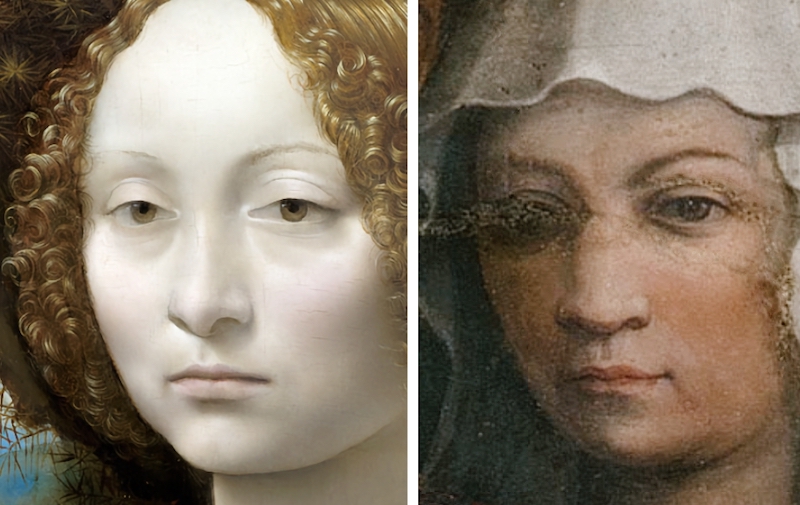This weekend I spent time researching more on Fra Lippi’s Seven Saints, a source used by Leonardo da Vinci for his Annunciation painting, and came across this work by the English artist Henry Holiday (1839-1927) titled Dante and Beatrice. It’s housed at the Walker Art Gallery, Liverpool.

“The painting is based on Dante Alighieri’s 1294 autobiographical work La Vita Nuova which describes his love for Beatrice Portinari. Dante concealed his love by pretending to be attracted to other women. The painting depicts an incident when Beatrice, having heard gossip relating to this, refuses to speak to him. The event is shown as Beatrice (in a white dress) and two other women walk past Dante standing on the Santa Trinita Bridge in Florence. […] Holiday was anxious that the painting should be historically accurate and in 1881 travelled to Florence to carry out research. […] When Holiday died in 1927, he was described as ‘the last Pre-Raphaelite’. Many of Dante Gabriel Rossetti’s paintings, including Dante’s Dream, had as their subject the Italian poet Dante Alighieri, and this interest is the likely inspiration for Holiday’s painting.” (Wikipedia)
However, another inspiration was the Italian Renaissance painter Sandro Botticelli. It is said that after Botticelli died in 1510, interest in the artist and his work waned and was virtually forgotten until renewed by the Pre-Raphaelite Brotherhood, founded in 1848.
While on his research visit to Florence, Holiday may have had the opportunity to seek out and closely study Botticelli’s paintings housed in the Uffizi Museum. So it should come as no surprise that Botticelli’s influence can be recognised in Holiday’s Dante and Beatrice – none more so than elements of Botticelli’s Primavera, the left half showing the Three Graces and the mythological figure generally identified as Mars. It is Mars who has turned away from the Three Graces, while in Holiday’s painting it is Dante who is ignored by the three women.

Compare the detail below of two of the women from both paintings. See how Holiday has matched the tilted head of the woman on the left. Another match is the woman’s hand resting on the shoulder. Then there is the rose paired with the brooch on the woman’s chest.


But the clincher is the barrel placed at the left edge of Holiday’s painting. It’s a shout-out to Botticelli, a nickname given to the artist which means “little barrel”. Holiday adds a final touch by identifying some of the produce in the barrel, spring greens (perhaps lettuces) alongside lemons, and so pointing to the title of Botticelli’s painting, Primavera, translated from Italian as “Spring”. Instead of the oranges depicted in Primavera, Holiday has shown lemons.

There are other elements of Holiday’s painting which suggest he may also have known of the connection between Botticelli’s Primavera and Fra Filippo Lippi’s Seven Saints.
I shall present details on this in a future post.





You must be logged in to post a comment.